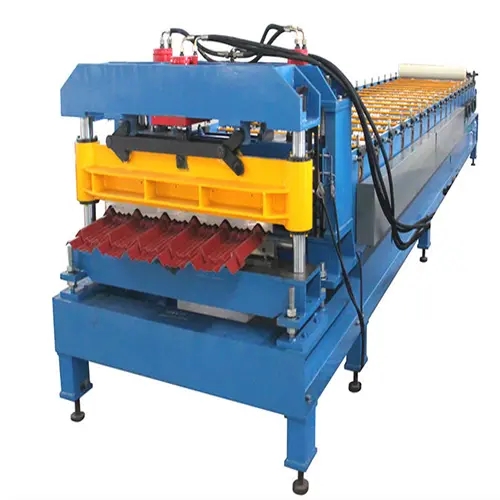
The Importance of Cold Roll Forming Machines in Modern Manufacturing
Cold roll forming is a sophisticated manufacturing process that has gained momentum in various industrial sectors, thanks to its ability to produce complex shapes with precision and efficiency. Central to this process are cold roll forming machines, which are designed to transform flat metal sheets into desired profiles that meet specific engineering requirements. In this article, we will explore the significance of cold roll forming machines, their working principles, applications, and advantages over traditional manufacturing methods.
Understanding Cold Roll Forming
Cold roll forming involves the progressive shaping of metal sheets by passing them through a series of rollers. Unlike other forming processes that require heating the metal, cold roll forming operates at room temperature, which preserves the material's intrinsic properties and delivers a range of advantages. The metal is progressively shaped into the desired profile with minimal waste over numerous passes. This precision is one of the key factors that set cold roll forming apart from other manufacturing processes.
The Working Principle of Cold Roll Forming Machines
Cold roll forming machines consist of several essential components, including rollers, a drive system, and a cutting or punching mechanism. The process begins with feeding the metal strip into the machine. As the strip moves through the rollers, it undergoes successive transformations—each set of rollers progressively shapes the metal until it reaches the final desired cross-section. The machine can be adjusted to cater to different specifications by changing the roller configuration.
In addition, cold roll forming machines are often equipped with cutting or punching mechanisms that allow for the production of components with integrated features, such as holes or slots. This reduces the need for additional machining processes, saving time and manufacturing costs.
Applications of Cold Roll Forming Machines
Cold roll forming machines are versatile and find applications across various industries. They are widely utilized in the construction sector for producing structural components such as steel studs, tracks, and roof trusses. The automotive industry also relies on cold roll forming for manufacturing key components, including chassis parts, brackets, and more, given the lightweight yet durable solutions it offers.
In addition to construction and automotive, cold roll forming is employed in the manufacturing of electrical conduits, furniture components, and even agricultural machinery. The ability to create highly specialized profiles allows manufacturers to meet the unique demands of these sectors effectively.

Advantages of Cold Roll Forming Machines
Cold roll forming machines provide several advantages that contribute to their growing popularity in the manufacturing sector
1. Efficiency and Cost-Effectiveness By minimizing material waste and reducing the number of processing steps, cold roll forming enhances overall productivity, making it a cost-effective solution.
2. High Precision and Consistency The process yields high-quality, uniform products, which is essential for applications requiring strict tolerances.
3. Strength and Durability Cold roll forming often results in stronger parts due to the strain hardening of the material. As the grain structure is aligned with the shape of the component, the final products exhibit improved mechanical properties.
4. Flexibility in Design Cold roll forming machines can be tailored to create an array of different profiles, making them suitable for custom designs specific to client needs.
5. Fewer Secondary Operations As stated earlier, the integrated capabilities of cold roll forming machines reduce the need for additional processing, which lowers production time and costs.
Conclusion
In conclusion, cold roll forming machines play a vital role in modern manufacturing, providing solutions that enhance efficiency, accuracy, and versatility. Their advantages make them indispensable tools across various industries, from construction to automotive. As manufacturing continues to evolve and adapt to the demands of modern society, cold roll forming will undoubtedly remain a cornerstone of innovation, enabling the production of high-quality components that meet the ever-changing requirements of the marketplace.